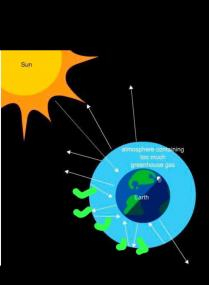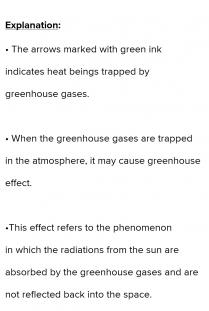1. The two factors that determine the species diversity found on an isolated ecosystem are the size of that ecosystem (for example, taking the island, the size of the island) and the degree of isolation of that ecosystem (for example, still with the island, the distance of an island from a mainland). If the island is big there is space for more different species, more variety of producers and predators, whereas if it is small, there isn't much space to have such great diversity as there is always species that are better adapted to an environment and will occupy their place over others. The degree of isolation is important in terms of migration, for example - is an island is too far away from the mainland, the species migration will be more difficult and restrict to those that are able to travel long distances.
2. MacArthur and Wilson are the authors of the theory. The theory application is to predict the richness of species in an isolated ecosystem based on the size and isolation of it. It is used the term "island" only as a way to describe a habitat that's ideal surrounded by another that's not, being thus isolated. The theory states also that the richness of species is a dynamic equilibrium resultant from immigration and extinction. The general conclusions are that bigger and less isolated "islands" have more species, as well as more species indicates higher extinction rates and lower immigration rates.
3. One of the conclusions of this theory is that bigger and less isolated "islands" have more species, smaller and more isolated "islands" have fewer species. For example, if the island is big there is space for more different species, whereas if it is small, there isn't much space to have such great diversity as there is always species that are better adapted to an environment and will occupy their place over others. Also if the island is more isolated from the mainland, species migration will be more difficult and it restricts the contact with those of the mainland.
4. Species diversity is established by species richness, the diversity in phylogeny within the existing species and the species evenness. Species richness is solely the number of different species that are present in an ecosystem, it doesn't matter the abundance of the species or their spatial distribution. Species evenness is how close in number the species are in a given ecosystem.
5. Native species (i.e. Kiwi in New Zealand) are those that occur naturally in a place, with no human intervention and are self-sustained. Non-native species (i.e. beavers in Tierra del Fuego) are those that are not historically native to the place they are found, were instead introduced in it. Indicator species (i.e. mosses indicate acidic soil) are those that indicate a characteristic of the environment they are in. Keystone species (i.e ochre sea star in the Pacific Ocean) are those that largely impact its environment when considering its abundance.
6. Foundation species (i.e. Tsuga canadensis in eastern North America) are those that have a great impact on the community structure of the environment they are in. They can be at any level of a food web. Usually, these are species whose presence and activity have such a huge effect on the rest of the community that if they were to disappear, it would affect the community's resilience.
8. a) Interspecific competition is the competition for the same resources, like food, space, water areas, etc. disputed by individuals of different species. For example, the lion and the hyena, in the African savannahs, are of different species but, however, they compete for the same food - chase the same animals.
b) Four consequences of such happening may be competitive exclusion (when one species wins what the competition is about leading to a decrease in the other species' population), niche differentiation (when the species end up looking for more specific factors that don't match each other's), local extinction (when one of the species ends up being extinct), and coexistence (when both species coexist with no restriction inflicted by each other).
9. Camouflage, when a prey disguises itself in the surroundings, for example, the flat-tail horned lizard. Playing dead, when a prey pretends to be dead by tonic immobility, for example, the eastern hog-nosed snake. Communal defence, when preys group together to defend themselves, for example, the muskoxen.
10. Parasitism is different from predation because a parasite does not kill its victim as it happens in predation, but it uses up the victim's resources. Examples of parasitism may be ectoparasitism and endoparasitism. Two other types of symbiosis may be mutualism (hermit crab with sea anemone) and commensalism (phoretic mites on a fly).
The rest of the answers are on the comments below.
 4
4  4
4  10
10  23
23  23
23  13
13  13
13 





